Evidence has been mounting in recent months that the Chinese leadership may be implementing a hard pivot toward asserting greater state control of society and the economy. In the months following Beijing’s surprise November 2020 decision to block Alibaba’s Ant Group from listing on the Shanghai and Hong Kong stock exchanges, Chinese authorities have launched a widening series of crackdowns on technology giants, wealthy individuals, education services providers, celebrities, and even youth video gamers. Restraints on Beijing’s interventions in society and the economy have become harder to identify.
Beijing’s spate of actions has sparked questions among policymakers, investors, journalists, and interested observers about what is motivating China’s actions. Why would the normally tightly controlled Chinese media communicate such sweeping changes in a ham-fisted way that would lead to over $1 trillion in market value for China-listed firms being wiped out? Is China teetering on the cusp of social upheaval, or is the leadership using a moment when it feels strong at home to make major policy adjustments?
What is happening?
According to China business and technology reporter Chang Che, China has 14 “crackdowns” simultaneously underway on business sectors and individuals at the time of this writing. Many — though not all — of the crackdowns fall under the umbrella of the concept of “common prosperity.” President Xi Jinping highlighted this concept during his comments to the Chinese Communist Party Central Committee for Financial and Economic Affairs on August 17, suggesting that “common prosperity” is a fundamental requirement of socialism and is necessary to balance growth and financial stability. Following its meeting, the committee called for “reasonably adjusting excess incomes” and encouraging high-income individuals and businesses to “give back more to society.”
This sweeping series of regulatory measures has sparked a rare public debate inside China. On one side are those favoring bold measures leading to a broad reorienting of China’s economy and society. A previously low-profile blogger, Li Guangman, captured this sentiment in an essay that went viral and was republished online by party and state-controlled media. In his essay, Li called for a “profound revolution” to correct the inequalities that capitalism has wrought.
On the other side are more establishment-minded advocates of reforms to steadily advance social progress while still nurturing conditions conducive to innovation and entrepreneurship. One of the proponents of this view, Hu Xijin, the editor-in-chief of the nationalist Global Times newspaper, has chastised those arguing for “revolution,” suggesting that such loose rhetoric arouses unwelcome comparisons to previous eras of tumult inside China.
Historical context
The concept of “common prosperity” has deep roots in the Chinese Communist Party. Party mouthpiece People’s Daily first used the term in a headline on December 12, 1953, as part of an effort to bolster the case for socialism over capitalism. Capitalism, the newspaper warned, would allow a few to get rich while the vast majority of people remained poor.
As China Media Project Director David Bandurski has chronicled, under former paramount leader Deng Xiaoping, China’s propagandists turned the argument on its head, suggesting instead that “allowing some peasants to get rich first is a practical policy to achieve common prosperity.” They suggested it would be better to allow some to get rich first and then pull others up behind them.
In the decades since, China’s economy boomed and social inequality rose. These twin developments prompted the Chinese Communist Party to launch a war to stamp out poverty. Beijing commendably succeeded in eradicating extreme poverty in China earlier this year. Even so, there still are still some 600 million workers who live off a monthly income of $154 or less. The fact that a poor population nearly twice the size of the full population of the United States lives alongside a wave of first-generation billionaires and millionaires who consume nearly half of all luxury goods sold globally creates complexities for social cohesion in China.
In launching a recent wave of actions to redress social inequality and economic disparity, China’s leaders may view themselves as correcting some of the excesses of Deng’s decision to “let some people get rich first.” Such efforts align with Xi’s efforts to recast himself from a princeling to a populist leader. As some of the initial awe of Xi’s anti-corruption efforts begins to fade, his efforts to champion greater equality, including by soaking the rich, presents Xi a new opportunity to align with the people against the powerful. Such efforts also have a corollary benefit of chastening China’s new oligarchs against challenging his authority or that of the Chinese Communist Party in governing China.
Xi Jinping also is a committed believer in the superiority of China’s governance model. He may believe the recent wave of crackdowns is necessary to bring about socialism at home to differentiate from capitalism as practiced in the West. To do so, an important step is redistributing wealth, leveling opportunity for social advancement, and reducing social inequalities. A more conventional approach for advancing these objectives might be to implement measures such as a property tax, a more progressive income tax, or an inheritance tax, but those measures would be controversial and likely resisted by party elites.
There also may be a national security dimension to the Chinese leadership’s decision to pursue such wide-ranging crackdowns. In a speech to the Central Party School on September 1, Xi spoke darkly of mounting challenges to China’s rejuvenation. He suggested that complexities resulting in “changes unseen in a century” were intensifying, and told cadres, “It is unrealistic to expect a peaceful life without struggle.” He appeared to be seeking to mobilize people for the possibility of growing challenges on the horizon.
The Chinese leadership also appears to be signaling that it wants to exercise greater say in where resources are allocated within society to meet future challenges. They do not seem to be dazzled by improvements to e-commerce platforms, video games, or food delivery services. Rather, they appear to want talent and capital focused on strengthening China’s competitive position in key strategic sectors, such as high-end manufacturing, green technology, semiconductor production, electric vehicles, and other national priorities that were identified in the Made-in-China 2025 initiative and the 14th Five-Year Plan.
Is there a bottom?
In recent years, public attitudes in the United States and other developed countries toward China have soured considerably. Beijing’s recent wave of crackdowns may add to unease abroad about China’s overall trajectory, including by sending a chill to the international business community, traditionally among the more active supporters of constructive relations with China.
Perhaps recognizing this dynamic, senior Chinese officials have sought in recent days to reframe the narrative around China’s regulatory tightening and “common prosperity.” The state-run Economic Daily published an op-ed on August 20 suggesting that recent regulatory actions and the ensuing market sell-off were a short-term cost for healthy long-term growth. A senior economic official, Han Wenxiu, built on this theme at a briefing in Beijing on August 26, when he explained, “Common prosperity means doing a proper job of expanding the pie and dividing the pie… We will not ‘kill the rich to help the poor.’”
In case Han’s message did not come through clearly for Western observers, Chinese state media outlet Xinhua published an English-language explainer article on “common prosperity” the same day. In the piece, Xinhua explained, “Common prosperity is an essential requirement of socialism… Common prosperity is not egalitarianism. It is by no means robbing the rich to help the poor as misinterpreted by some Western media.”
President Xi underscored the point several days later. In remarks to the Global Trade in Services Summit of the 2021 China International Fair for Trade in Services on September 2, Xi emphasized, “We will work with all other parties to uphold openness, cooperation, mutual benefit and win-win, share opportunities in the growth of services trade, and promote world economic recovery and growth.” Less than a week later, Vice Premier Liu He publicly assured businesses of the Chinese government’s support for the private sector. On September 8, the People’s Daily published a front-page reassurance that China will “unswervingly promote high-level opening-up, protect property and intellectual property rights, and enhance policy transparency and predictability.”
Even with this wave of authoritative clarifications, it remains too early to tell where this regulatory crackdown will end. Has the Chinese leadership decided to rely upon a one-way ratchet to inalterably tighten control over society and the economy? Or have recent steps, such as the announcement of a new Beijing stock exchange, served as a signal that Beijing is searching for ways to reset the relationship between the party, society, and the market, but in ways that do not choke off dynamism that will be needed to sustain high-quality growth?
While the answers to these questions is as yet unknowable, it already is clear that Beijing’s actions in the coming months will bear careful watching for signs of the direction the country is heading. Actions — not words — will be the currency in which Beijing’s intentions will need to be understood.
The Brookings Institution is committed to quality, independence, and impact.
We are supported by a diverse array of funders. In line with our values and policies, each Brookings publication represents the sole views of its author(s).

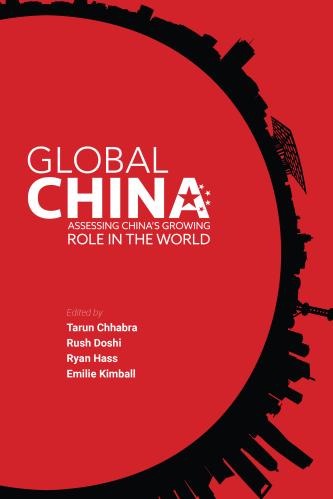
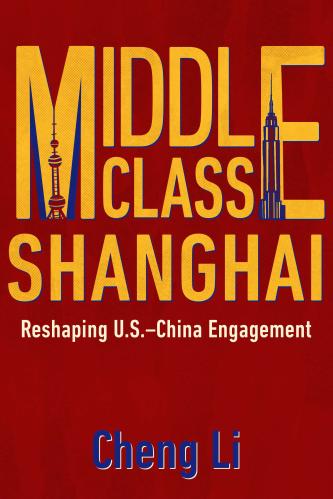
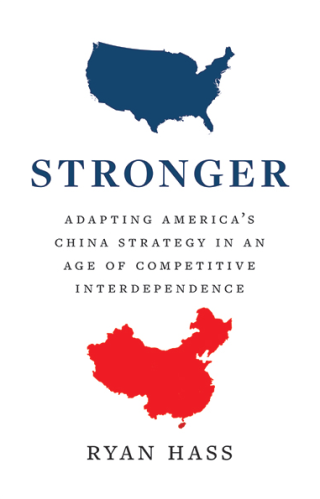

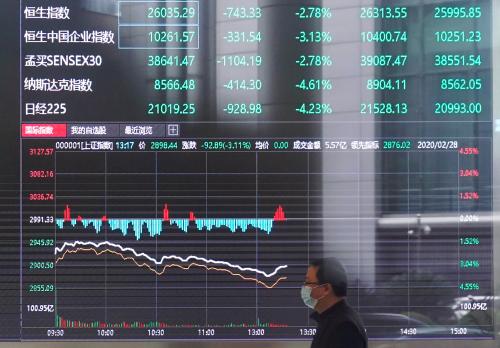
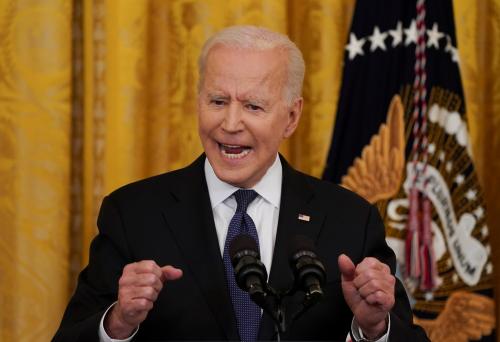


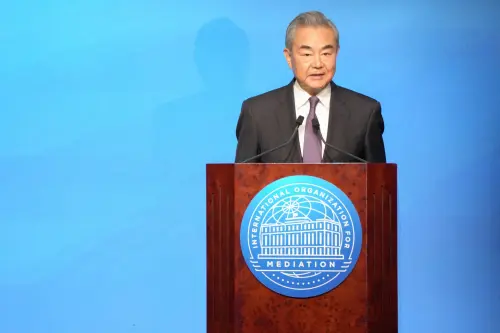
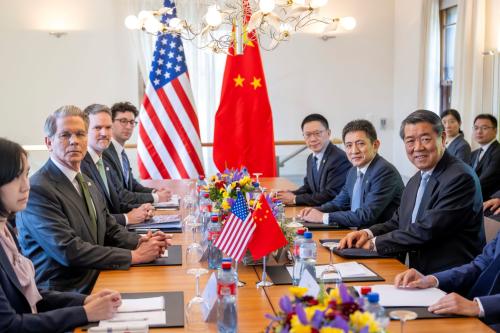
Commentary
Assessing China’s “common prosperity” campaign
September 9, 2021